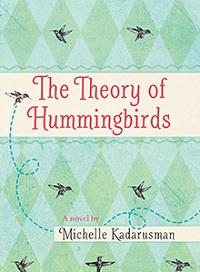| ________________
CM . . . . Volume XXIV Number 6. . . . October 13, 2017
excerpt:
Alba is a grade-six girl exploring her physical limits as well as her relationship with best friend Levi. After one final surgery to correct her directionally challenged left foot, which has been in a brace or cast for most of Alba’s life, Alba intends to participate in the sixth-grade cross-country race. Levi’s response, however, is surprising; always a supportive buddy, this time he lets her down. Alba retaliates, criticizing Levi for staying inside to avoid asthmatic triggers and dissing his scientific investigation. In the end, they recover their special friendship and open their arms to others—a sign of increasing maturity. Like Alba, author Michelle Kadarusman experienced juvenile surgeries for clubfoot, as described in her “Author’s Note”, and Alba’s perspective here is delightfully authentic. Levi’s contributions to the story, however, seem slightly contrived. His asthma consistently out of control, he appears to use only quick-relief rescue medications, and for a science-nerd at this age, mistaking a teacher-librarian’s closet refuge for a wormhole in space-time is unbelievable. He is a likeable character, however, and carries well the dialogue that introduces many interesting facts that middle-grade readers will enjoy. Indeed, it is these facts that will keep readers intrigued over and above the more common theme of friendship that binds this story, elevating this novel to a rich and thought-provoking read. A glossary of Alba’s Hummingbird Facts appears at the end of the book. One noteworthy aspect of this novel involves the chapter titles. Headings, such as “Wormholes,” “Barefoot Librarians,” “The High-Performance Running Shoe,” and “Field Studies and Pig Braids,” add interest and support reading comprehension through catchy snapshots of main ideas. The total design of the book, including its various fonts and hummingbird images, is captivating. In a couple of places, aspects of the story make for excellent critical literacy discussions. Alba’s single mother takes a shine to Alba’s medical specialist; is a personal relationship between them appropriate? And Alba constantly longs to be “normal” until the ending when she decides that her bad foot “didn’t have to be normal, because it wasn’t normal that mattered.” Is Alba really abnormal, or is diversity, and the way we think today about difference, the new normal? Important discussions for classrooms and beyond. Highly Recommended. Bev Brenna is a literacy professor at the University of Saskatchewan with many published books for young people; her new middle-grade novel, Fox Magic, has just been released by Red Deer Press.
Next Review |
Table of Contents for This Issue
- October 13, 2017. |
